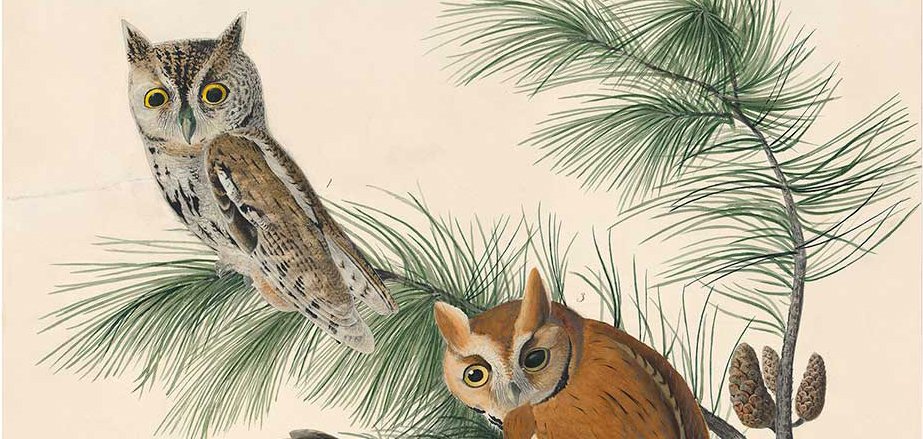
Summer weekends might not offer as many birds as other times of year, but they certainly offer the best conditions for enjoying whatever might be found. Nothing beats cracking open a cold one on a hot day and watching waves of fledgling yard birds suck our feeders dry.
Sara and I were thrilled to find that an Eastern Screech-Owl visited us late at night. That eerie whinny drew us out of bed, but we were more focused on not freaking out the neighbors than we were on laying eyes on the bird. That’s why you get an Audubon print rather than a real photo! Corey’s Best Bird of the Weekend was easy to decide: his lifer Black-billed Magpie just outside of Denver. His second magpie was cool too, as was his third, fourth, fifth and sixth. By his fifteenth or so he was pretty ok with not seeing any for a bit…
How about you? What was your best bird of the weekend? Tell us in the comments section about the rarest, loveliest, or most fascinating bird you observed. If you’ve blogged about your weekend experience, you should include a link in your comment.











White-crowned Parrots flying over the house each morning in Santa Barbara de Heredia, Costa Rica.
Dozens of Rhinoceros Auklets out on the bay. I live on the Olympic Peninsula near Protection Island, one of the largest nesting colonies in the world. Recently hundreds have washed ashore, far more than is normal. Scientists are trying to figure out what’s going on!
While it was very exciting to see a Pacific-slope Flycatcher here in La Paz, but the nod for BBotW will have to go to my new lifer, a Varied Bunting that I found down near something of an oasis here in the desert.
Wendy, you commented that they were washing ashore, do you mean that there is something causeing a high mortality rate? I would love to follow along with what ever you find out?
Tom
Hi Tom, this newspaper article is pretty current:
http://archive.peninsuladailynews.com/article/20160727/NEWS/307279979/scientists-look-for-answers-as-hundreds-of-dead-birds-wash-ashore
The group out of UW, COASST, has a website, but it’s not easy to navigate. I sent them some of my photos of a rhino auklet shaking its head and bobbing in the incoming tide, and COASST hopes to see videos of this behavior. The COASST director, Julia Parrish, wrote me, “we are trying to figure out whether these moribund birds are simply in the final stages of starvation, or whether they are suffering neurotoxin effects potentially transmitted via forage fish food up the food chain from toxic algae (that is, from the same phytoplankton that create harmful algal blooms).”
Thanks for that Link Wendy, I find it very interesting that is seems to only be the Rhino Aukelts that are being effected/discussed.Did you observe any other species? I would be surprised to see that this is found to be a starvation issue, considering the amount of food that is in that is in that area. Some of my friends up there have been talking about the unprecedented number of cetaceans that are remaining in the straight. Even seeing Humpbacks all the way down to Point No Point.
Again, thanks for following up for me!
Tom